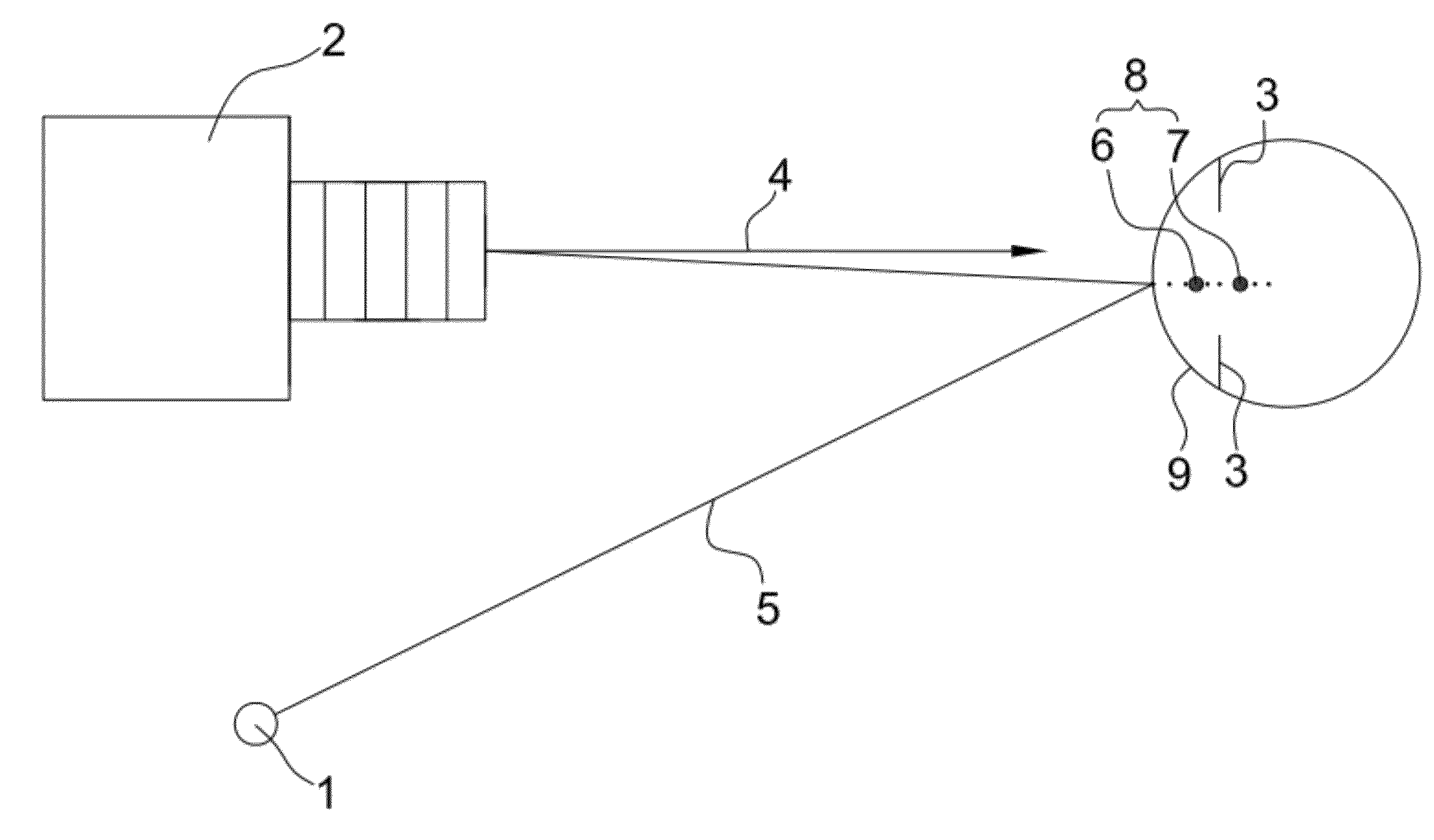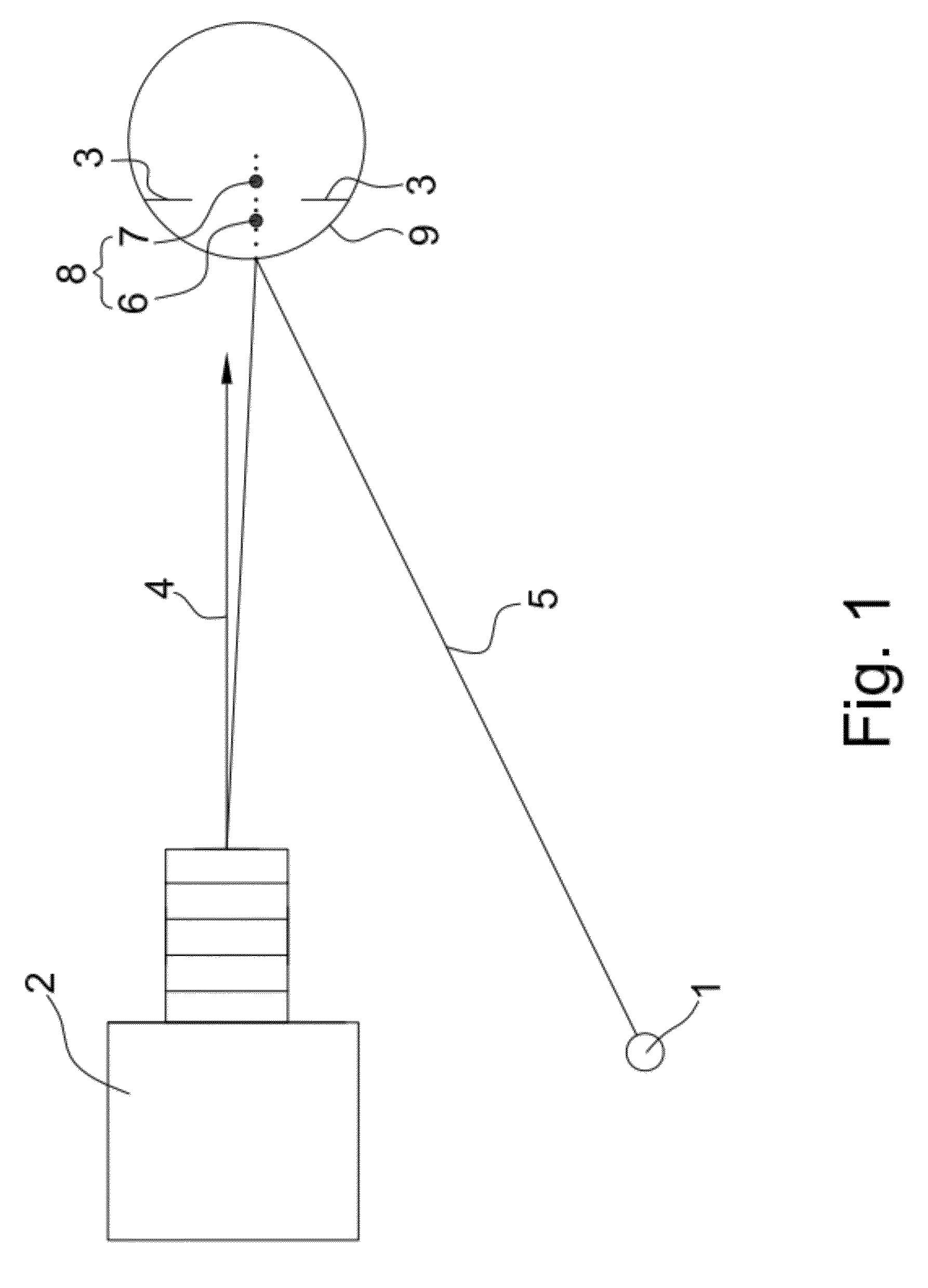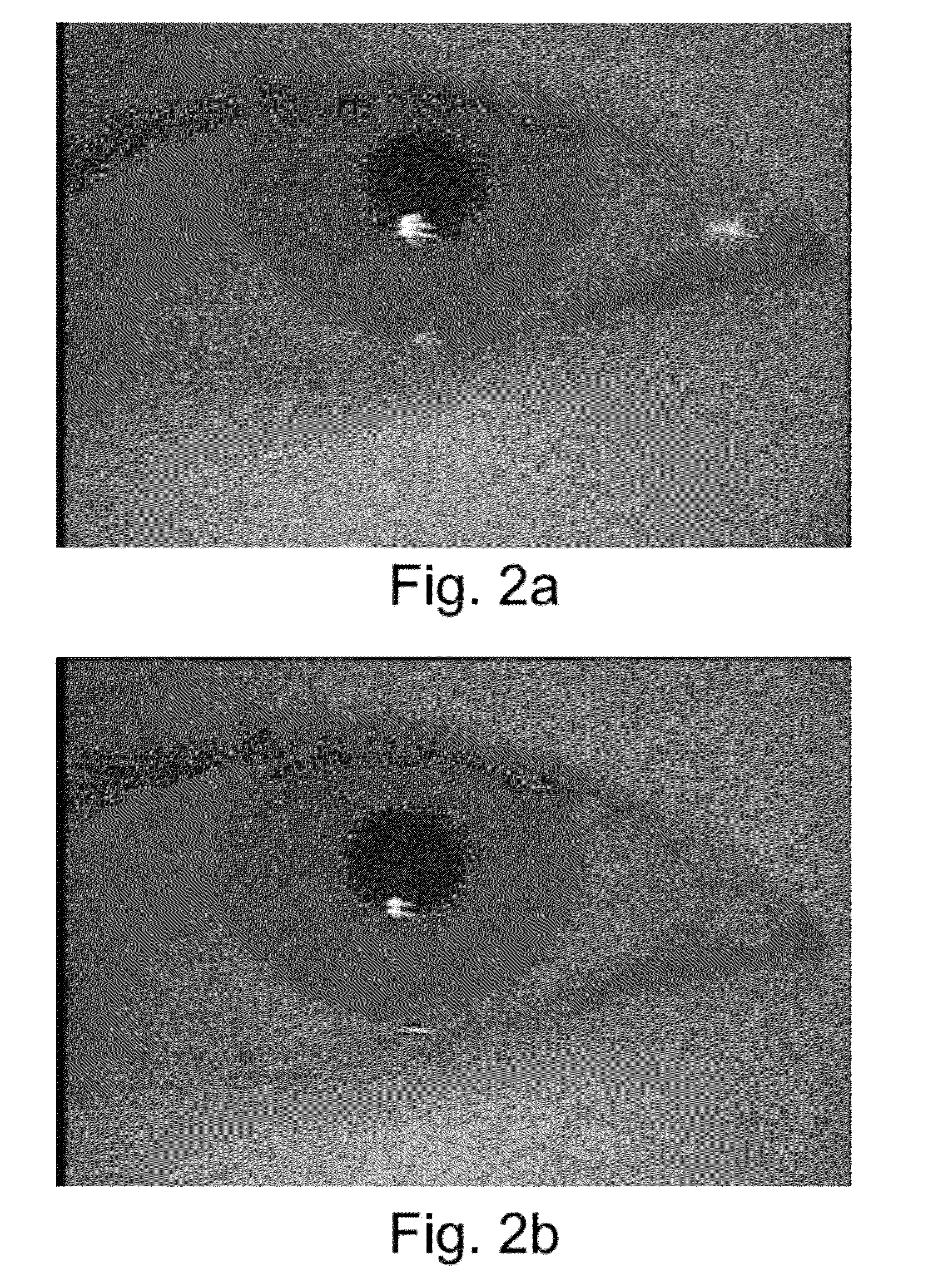Iris image definition estimation system using the astigmatism of the corneal reflection of a non-coaxial light source
astigmatism technology, applied in the field of iris image definition estimation system using the astigmatism of the corneal reflection of a non-coaxial light source, can solve the problems of inability to easily achieve real-time calculation of resolution, shallow depth of field of a telephoto lens, and inability to provide a single image focus adjustment direction, etc., to achieve the effect of simplifying the calculation
- Summary
- Abstract
- Description
- Claims
- Application Information
AI Technical Summary
Benefits of technology
Problems solved by technology
Method used
Image
Examples
Embodiment Construction
[0024]As shown in FIG. 1, the present invention provides an iris image definition estimation system using astigmatism of the corneal reflection of a non-coaxial light source which further comprises a non-coaxial light source 1, which is used to produce an incident light 5. Incident light 5 is transmitted into cornea 9 at an oblique angle deviating from the optical axis 4. The meridional virtual image 6 and the sagittal virtual image 7 are then formed behind the cornea due to astigmatism of the corneal reflection. An image sensor 2 records the composite glint area formed by both the meridional virtual image 6 and the sagittal virtual image 7, and subsequently provides the information for adjustment of the focus setting. If the sensor 2 focuses at a distance near the meridional virtual image 6, the glint area spreads narrowly along the meridional direction because it is clearly focused. On the other hand, if the sensor 2 focuses at a distance near the sagittal virtual image 7, the gli...
PUM
 Login to View More
Login to View More Abstract
Description
Claims
Application Information
 Login to View More
Login to View More - R&D
- Intellectual Property
- Life Sciences
- Materials
- Tech Scout
- Unparalleled Data Quality
- Higher Quality Content
- 60% Fewer Hallucinations
Browse by: Latest US Patents, China's latest patents, Technical Efficacy Thesaurus, Application Domain, Technology Topic, Popular Technical Reports.
© 2025 PatSnap. All rights reserved.Legal|Privacy policy|Modern Slavery Act Transparency Statement|Sitemap|About US| Contact US: help@patsnap.com



